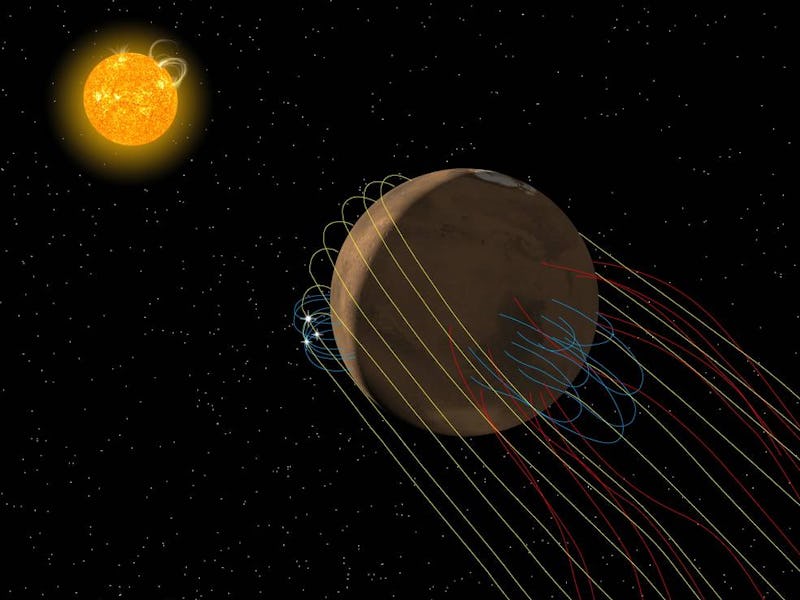At first glance, Elon Musk’s future home, Mars, looks like an overgrown litter box. But if the red planet has proven anything, it’s that it’s full of surprises, like ancient lakes and supervolcanoes. Now, NASA’s Mars Atmosphere and Volatile Evolution Mission (MAVEN) spacecraft has uncovered another one of the planet’s secrets — a magnetic tail.
Planets like Earth and Venus are protected from bursts of radiation from the sun by large magnetic fields. While it’s likely that Mars once had a global magnetic field similar to Earth’s, it’s gradually lost it over the course of billions of years. According to a new model created by the MAVEN team, Mars has been left to drag around a “magnetotail,” which is formed by highly charged particles from solar wind connecting with magnetic fields on the planet’s surface. This process, called “magnetic reconnection,” might have actually sent much of Mars’ atmosphere off into space.
“Our model predicted that magnetic reconnection will cause the Martian magnetotail to twist 45 degrees from what’s expected based on the direction of the magnetic field carried by the solar wind,” Gina DiBraccio of NASA’s Goddard Space Flight Center says in a press release. “When we compared those predictions to MAVEN data on the directions of the Martian and solar wind magnetic fields, they were in very good agreement.”
In order to measure Mars’ magnetotail, the MAVEN team used the spacecraft’s magnetometer instrument. They found that although other planets have magnetic fields, Mars’ is a bit of an oddball in our cosmic neighborhood.
“We found that Mars’ magnetic tail, or magnetotail, is unique in the solar system,” DiBraccio says. “It’s not like the magnetotail found at Venus, a planet with no magnetic field of its own, nor is it like Earth’s, which is surrounded by its own internally generated magnetic field. Instead, it is a hybrid between the two.”
According to NASA, the MAVEN researchers will continue to monitor magnetometer data over the next few years to better understand how Mars’ invisible tail is impacted by the planet’s rotation. While Mars might not be the flashiest planet, once again, it proves that it’s unquestionably one of the most fascinating.
